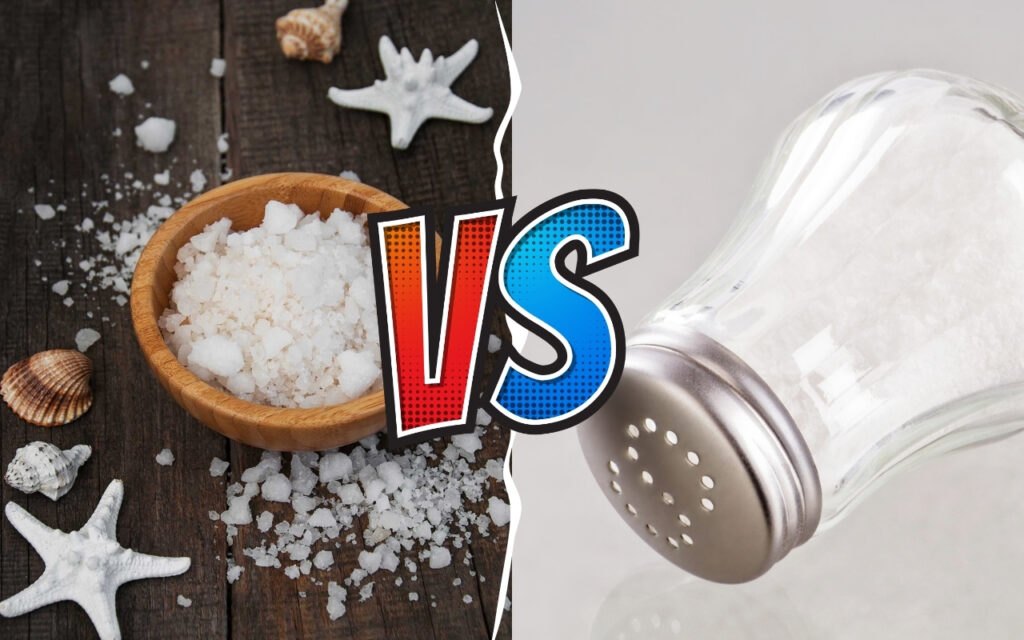
At BlastFitness.com, our team of personal trainers is always on the lookout for simple yet effective ways to enhance performance, support recovery, and optimize overall fitness goals. While sea salt might seem like a humble kitchen staple, its unique mineral content and hydration benefits make it a surprisingly powerful ally in your endurance and strength training regimen.
Why Sea Salt Matters for Fitness Enthusiasts
When it comes to intense workouts, especially those that involve sweating, sodium and other electrolytes play a crucial role in maintaining fluid balance, muscle function, and overall performance. Sea salt, derived from evaporated seawater, is minimally processed, retaining trace minerals like magnesium, potassium, and calcium, which contribute to muscle health and recovery.
Sea Salt vs. Table Salt: Which is Better for Your Fitness Goals?
| Feature | Sea Salt | Table Salt |
|---|---|---|
| Source | Evaporated seawater | Mined and heavily processed |
| Mineral Content | Contains trace minerals | Primarily sodium chloride with iodine |
| Sodium Content | ~2,000 mg per teaspoon | ~2,300 mg per teaspoon |
| Texture | Coarse, flaky | Fine, uniform grains |
| Uses in Fitness | Hydration, electrolyte balance | General seasoning |
How Sea Salt Can Benefit Your Training
1. Enhances Hydration and Electrolyte Balance
- Sweating during workouts leads to the loss of sodium, which can cause muscle cramps, fatigue, and reduced performance.
- Adding a pinch of sea salt to pre-workout water or electrolyte drinks helps replenish lost sodium, maintaining hydration and endurance.
2. Supports Muscle Function and Recovery
- The trace minerals in sea salt, such as magnesium and potassium, are essential for muscle contractions and preventing cramping.
- Sodium aids in fluid retention, ensuring that muscles stay hydrated and recover faster post-workout.
3. Boosts Energy Levels Naturally
- Sodium helps regulate blood volume and maintain proper circulation, which can enhance energy levels during long endurance sessions.
- A balanced electrolyte intake, including sea salt, can prevent early fatigue and help maintain intensity throughout strength training.
How to Incorporate Sea Salt into Your Fitness Routine
1. Pre-Workout Hydration
- Mix 1/4 teaspoon of sea salt with 16 ounces of water, adding a splash of lemon juice for natural electrolytes and a pinch of honey for quick energy.
2. Intra-Workout Drink
- For long endurance workouts, add sea salt to your sports drink to maintain electrolyte balance and enhance performance.
3. Post-Workout Recovery
- After an intense training session, rehydrate with a sea salt solution to help muscle recovery and reduce cramping.
4. In Your Diet
- Use sea salt in homemade snacks, such as trail mixes and energy bites, to keep sodium levels balanced and avoid dehydration.
Caution: Avoid Overconsumption
While sea salt offers performance benefits, moderation is key. Too much sodium can negatively affect blood pressure and overall health. The American Heart Association recommends no more than 2,300 mg of sodium per day, with an ideal limit of 1,500 mg for most adults.
Final Thoughts: Should You Add Sea Salt to Your Fitness Routine?
At BlastFitness.com, we believe that every small change contributes to big gains. Sea salt is a natural, cost-effective way to enhance hydration, support muscle function, and maintain performance during challenging workouts. However, it’s not a substitute for a balanced diet, proper hydration, and consistent training.
If you’re looking to optimize your fitness regimen, consider adding a pinch of sea salt to your pre- and post-workout routines, and see how it supports your endurance and strength goals. As always, listen to your body, stay hydrated, and train smart!
Stay strong, fueled, and focused!
The Blast Fitness Team